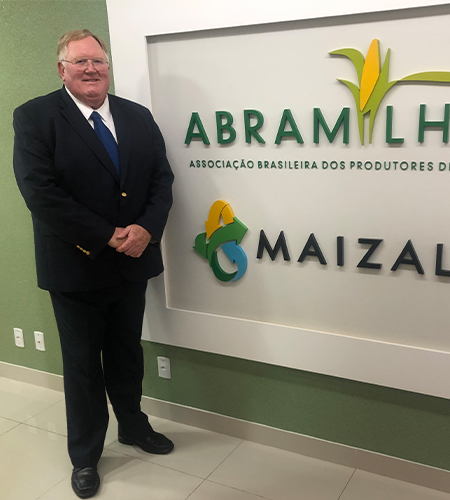You’ve got to have some kind of cover on the soil to protect it and improve soil health. That’s what conservation is all about – maintaining fertility, preserving the health of the soil and the productivity of the farm.

Julius Schaaf
Fremont County
Fremont County

Farming Operation
- Fifth-generation corn and soybean farmer in southwest Iowa who farms with his son and a longtime partner
- Recipient of a 2017 Iowa Farm Environmental Leader award
- Past chairman of the Iowa Corn Promotion Board
- Past chairman of the U.S. Grains Council
- Helped establish and still sits on the board of MAIZALL, a coalition of maize farmer associations from Argentina, Brazil and the U.S.
4R Plus Practices Used
- 100% no-till on rolling land for 25-plus years
- Plants cover crops on all corn ground going into beans
- Installed terraces and waterways – and repaired a lot of those terraces after the 2019 floods
- Restored wetlands, added ponds and expanded quail habitat
- Extensive soil testing every two years on 2.5-acre grids to ensure good soil fertility
- Precision application of fertilizers
- Precision planting using variable seeding prescriptions
- Yield mapping to pinpoint problem areas in fields
Results Seen
- Increased organic matter and better weed control
- Improved water-holding and nutrient-holding capacity of the soils
- Cover crops suppress weeds and early weed growth, making weed control less difficult
- Earthworms help prevent terrace flooding
- Yield-mapping identifies spots to target conservation practices
Plans for the Future
- Continue helping with the farm during the transition from father to son
- Continue no-tilling, cover cropping and conservation practices for the soil health and financial benefits
- Continue caring for all the land they farm, owned and rented
- Maintain good relationships with landlords and neighbors and keep them informed of the benefits of 4R Plus practices
Click here to ask Julius Schaaf a question about the farming operation.
Harvest 2021: Emphasize 4R Plus Practices in Cash Rent Discussions
Julius Schaaf, a fifth-generation farmer in Fremont County, was impressed by how well the 2021 corn and soybean crops performed given exceptional dryness early in the growing season that had him wondering if he’d be able to fill grain contracts. Rains were still 6 to 9 inches behind the norm, but they came at the right times.
“I’ve farmed for 42 years. I have never raised soybeans this consistently good,” Schaaf said, adding that soybeans like to be a little bit dry early in the season. He has been 100% no-till on his rolling farmland for more than 25 years and plants cover crops on all corn ground going into beans.
Click here for the full story.
Summer 2021: Maintaining a Long-Term View During a Difficult Growing Season
Julius Schaaf was encouraged about crop potential in Fremont County after nearly ideal planting conditions that resulted in excellent corn and soybean emergence. But a quick cooldown that extended well into June had him questioning if the crops could catch up and produce respectable yields. The crops are also in need of a meaningful rain.
“It seemed like in mid-June, the soybeans were getting smaller instead of bigger, but we finally caught a rain and crop growth accelerated,” said Schaaf. “We got through pollination without heat stress, but here we are at the end of July, temperatures are climbing and there’s no meaningful rain in the forecast.”
Click here for the full story.
Spring 2021: Improve Soil Water-Holding Capacity to Produce More Crops with Less
Fremont County corn and soybean farmer Julius Schaaf began experimenting with no-till in the 1980s and has been 100% no-till on rolling farmland for 25-plus years. He remembers a time when machinery made it more difficult to no-till but is happy to report it’s now a common practice in his area to limit erosion – even on the rented land.
Schaaf says maintenance on the terraces, waterways and buffer strips is important and something that kept him, his son and a longtime partner busy after the spring floods of 2019. “We’ve restored wetlands, added ponds and expanded quail habitat,” he said.
Click here for the full story.
